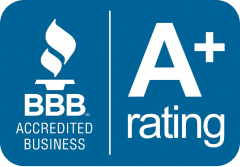
Medicare vs. Medicaid:
Each year, the Medicare plan options and costs are subject to change.
- Medicare and Medicaid are two government-funded healthcare programs in the United States.
- Medicare covers anyone over the age of 65, as well as those who have certain chronic illnesses or disabilities.
Medicaid and Medicare are commonly interchanged or misinterpreted. Although these two applications look to be extremely similar, they are actually rather different.
Each has its own set of rules and policies, and the programs are usually targeted at specific categories of people. It is, nevertheless, possible to be eligible for both programs.
To choose the proper program for your needs, you must first understand the differences between Medicare and Medicaid.
Find Medicare Plans in 3 Easy Steps
We can help find the right Medicare plans for you today
What exactly is Medicare?
Medicare is a healthcare insurance program for those 65 and older in the United States who are having trouble paying for medical care and treatments. This program assists seniors and their families who require financial assistance for medical expenses.
People who are under the age of 65 living with certain disabilities may also be qualified for Medicare benefits. Each case is evaluated based on eligibility requirements and the program details.
Those who are in the terminal stages of renal disease can also apply for Medicare coverage.
Original Medicare and Medicare Advantage are the two primary branches of Medicare to choose from.
Medicare Part A & B
Original Medicare is a government-funded medical insurance program that many seniors use as their primary coverage. It includes the following topics:
- Hospital services for inpatients (Medicare Part A). Hospital visits, hospice care, limited skilled nursing facility care, and at-home healthcare are all covered under these benefits..
- Medical treatments are provided on an outpatient basis (Medicare Part B). These advantages include coverage for health-related preventive, diagnostic, and treatment services.
Medicare Supplemental Insurance
Medicare Advantage (Part C) is a health insurance option for people who desire original Medicare coverage but with more options.
Medicare Advantage plans are provided by private insurance providers. Many of these plans include services that aren’t covered by basic Medicare, such as prescription medication coverage, dentistry, vision, and hearing care.
What exactly is Medicaid?

Medicaid is a program in the United States that brings together the efforts of the federal and state governments to assist low-income households with healthcare costs. These costs may include major hospitalizations and treatments, as well as routine medical care.
Millions of adults, children, and people with disabilities benefit from the program each year. 72,204,587 people have joined up for Medicaid as of November 2020, while 6,695,834 children had signed up for the Children’s Health Insurance Program (CHIP).
What is the difference in cost between Medicare and Medicaid (Medicare vs. Medicaid)?

Costs of Medicare
For items like hospital stays, people who receive Medicare coverage pay a portion of the cost through deductibles. Outside of the hospital, for example, a doctor’s appointment or preventative treatment.
Small monthly premiums are required by Medicare. Prescription medicines, for example, may have some out-of-pocket expenditures.
The following is a breakdown of expenditures for both traditional Medicare and Medicare Advantage:
Original Medicare Medicare Advantage Portion A of the monthly premium is normally $0; part B is typical $170.10 (but can start at $0). Part A: $1,556 each benefit period; part B: $233 (starts at $0); if your plan covers both health and drug coverage, you may have a health and a drug deductible. Part A: $0, $389, or $778+ per day (depending on the length of your stay); part B: 20% of all approved medical services after your deductible has been met.
Costs of Medicaid
Medicaid recipients normally don’t have to pay anything for eligible services, although in rare situations, a small copayment is required.
As a type of cost-sharing, states might impose limited premiums and enrollment fees. This is true for certain types of Medicaid recipients, such as:
- With a household income of at least 150% of the federal poverty line, pregnant women and newborns are at risk (FPL)
- Individuals who are disabled and working and earn more than 150% of the federal poverty level
- Individuals with disabilities who are employed and are eligible under the Ticket to Work and Work Incentives Improvement Act
- Children with disabilities who are qualified under the Family Opportunity Act
- People in need of medical attention
Eligibility for Medicare and Medicaid

You must meet specific requirements in order to participate in any programme.
Eligibility for Medicare
In most circumstances, the applicant’s age determines whether or not they are eligible for Medicare. A person must be a US citizen or permanent resident who is 65 years old or older to be eligible.
The number of years of Medicare taxes paid determines premiums and eligibility for various Medicare plans.
Exemptions apply to anyone under the age of 65 who have specific confirmed disabilities.
People who get Medicare benefits are usually also eligible for Social Security benefits. Benefits under Medicare can also be extended to:
- a widow or widower who is 50 years old or older and is qualified for the Social Security disability program
- the kid of someone who worked for the government for a certain amount of time and paid Medicare taxes
Eligibility for Medicaid
Medicaid eligibility is mostly determined by one’s income. The amount of money earned and the size of the family determine whether or not someone qualifies.
The Affordable Care Act has expanded coverage to fill up the gaps in healthcare for individuals with the lowest incomes, while also establishing a national minimum income requirement. Visit Healthcare.gov to see if you qualify for assistance in your state.
A household income of less than 133% of the federal poverty threshold qualifies the majority of adults under 65. According to Healthcare.gov, this sum will be around $12,880 for an individual in 2021 and $26,500 for a family of four in 2022.
Based on the particular standards of their state of residency, children are given greater income levels for Medicaid and CHIP.
Within the Medicaid program, there are additional special programs that provide coverage to individuals in need of immediate help, such as pregnant mothers and those with urgent medical requirements.
Coverage under Medicare and Medicaid

Coverage under Medicare
The Medicare program is divided into numerous sections that cover various elements of healthcare.
Part A of Medicare covers a variety of inpatient medical treatments, including hospital stays, hospice services, and limited skilled nursing and home healthcare.
The outpatient medical element of Medicare is known as Part B. It covers outpatient hospital care, physician appointments, preventative care, and some medical equipment, among other things.
Part C, often known as Medicare Advantage, is administered by approved commercial insurers and contains all of the benefits of Parts A and B of Medicare.
Other benefits, like dental and eye coverage, as well as prescription drug coverage, may be available for an additional fee.
Medicare Part D is a federally regulated program that helps pay for prescription medications and is administered by recognized plans.
Medicaid coverage is available to those who qualify.
Medicaid benefits vary by state, however, there are several perks that are included in every program.
These are some of them:
- X-ray and laboratory services
- Hospital services, both inpatient and outpatient
- Birth control and nurse-midwife services are examples of family planning services.
- Children’s health exams and appropriate medical treatment
- Adult nursing facility services
- Adults’ surgical dental services
Because each state’s Medicaid program is different, you may wish to speak with a caseworker in your state to analyze your situation and get assistance applying.
Is it possible to have both?

Dual eligible people are those who qualify for both Medicare and Medicaid. You may have traditional Medicare (Parts A and B) or a Medicare Advantage plan (Part C), and Medicare will cover your prescription drugs through Part D.
Medicaid may also cover services and medications that Medicare does not, so having both will likely cover the majority of your medical expenses.
The takeaway
Medicare and Medicaid are two government programmes in the United States that are designed to assist diverse populations in gaining access to healthcare.
Medicare normally covers people aged 65 and up, as well as those with certain chronic illnesses or disabilities, whereas Medicaid eligibility is determined primarily by income and need.
Find Medicare Plans in 3 Easy Steps
We can help find the right Medicare plans for you today
FAQs
How do you qualify for Medicaid NV?
Medicaid is available in Nevada to households with annual incomes up to 138 percent of the federal poverty level. Individually, this works up to $16,753 each year, or $34,638 for a family of four. Visit Access Nevada for additional information on Medicaid in Nevada and to discover if you qualify.
What are the qualifications for Medicaid in Michigan?
To be eligible for Michigan Medicaid, you must be a Michigan resident, a U.S. national, citizen, permanent resident, or legal alien who is in need of health care/insurance and has a low or very low income.
Who is eligible for Medicaid us?
Medicaid recipients must generally be residents of the state in which they receive benefits. They must either be US citizens or meet particular criteria for non-citizens, such as lawful permanent residents. Furthermore, some qualifying categories are restricted due to age, pregnancy, or parental status.
“Dual eligibles,” or Medicare-Medicaid participants, are those who are eligible for both Medicare and Medicaid. Persons must be enrolled in Medicare Part A (hospital insurance) and/or Medicare Part B to be deemed dual-eligible (medical insurance).







